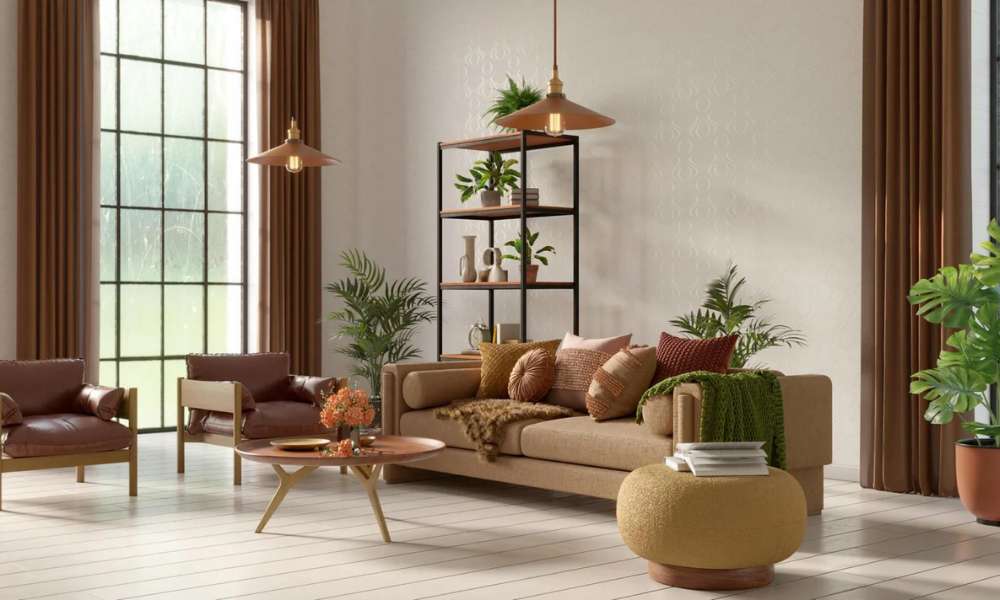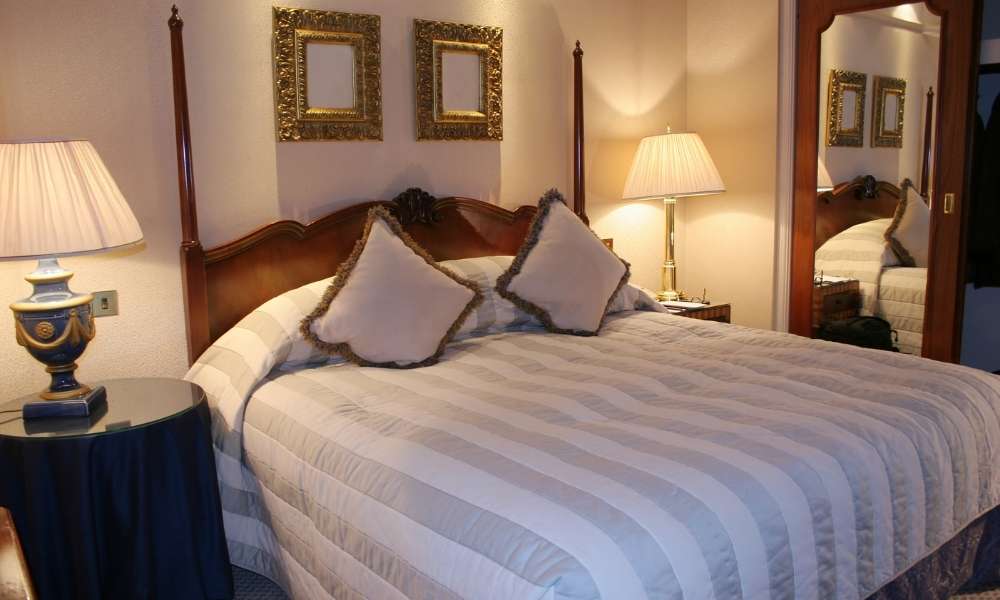Brown furniture can add warmth and elegance to any room, but finding the perfect color combination to complement it can be a daunting task. The right color choice can enhance the rich tones of brown furniture, creating a harmonious and visually pleasing space. Whether you are looking to create a cozy living room or a sophisticated office, understanding how different colors interact with brown is crucial in achieving the desired ambiance. In this article, we will delve into the art of color coordination and explore various hues that go well with brown furniture, helping you transform your space into a stylish haven of comfort and beauty. Let’s unlock the secrets of color harmony and discover how to make your furniture shine in its best light!
Understanding Color Harmony
Color harmony is the artful fusion of colors in a design to achieve a unified, visually appealing outcome. Well-matched colors can elicit varied emotions and styles, enriching a space’s overall charm. In interior design, mastering the color wheel and principles of color theory is crucial. Various harmony types exist, like complementary colors (opposites on the wheel), analogous colors (neighboring hues), and triadic colors (forming a triangle). When pairing colors with brown furniture, aim for hues that complement the warm wood tones, whether bold or soft shades. This not only enhances the furniture’s allure but also highlights the room’s character.
The Color Wheel
The color wheel is a key tool for designers and decorators, guiding them in understanding color relationships. It includes primary colors (red, blue, yellow), secondary colors (green, orange, purple – made by mixing primary colors), and tertiary colors (from primary and secondary combos). By studying the color wheel, you can spot complementary, analogous, or triadic colors to brown. Brown, a blend of red, yellow, and blue, is versatile for pairing with various colors. Use the color wheel to craft diverse, harmonious schemes that enhance brown furniture and elevate your space’s appeal.
Colors that Complement
Soft neutrals and earth tones harmonize effortlessly with brown furniture, enhancing its inherent warmth. Shades like beige, cream, taupe, and soft gray establish a tranquil and soothing ambiance, ideal for spaces dedicated to relaxation. These tones reflect the natural world, infusing indoor spaces with an earthy and unified appearance. When coupled with brown accents, they introduce a gentle contrast that is visually comforting, creating an open and airy yet snug and welcoming environment. Moreover, integrating these hues through fabrics, wall paints, or decorative elements can introduce richness and tactility to the room, elevating its overall aesthetic allure.
Warm Tones
Brown furniture, especially in a deep mahogany or cherry wood finish, can be beautifully accented by the earthy richness of warm tones. Think about colors such as beige, cream, and terracotta. These colors share undertones that create a cozy and elegant environment when set against.
Beige and Cream
Neutral shades like beige and cream can give a room an airy, open feel while enhancing the natural warmth of brown wood. For a classic and refined look, pair light cream walls with a chocolate brown leather sofa. This combination is timeless and allows the furniture to take center stage.
Terracotta and Rust
If you prefer a more eclectic or bohemian aesthetic, terracotta or rusty reds add depth and a touch of boldness. When using these colors, consider painting an accent wall or incorporating them through textiles and art. They provide a welcoming atmosphere and can be particularly striking with lighter shade woods.
Earthy Hues
Earthy hues like olive green, mustard yellow, and burnt orange complement brown furniture for a cozy, nature-inspired space. These outdoor-inspired colors add richness and depth. Olive green brings tranquility and matches wood tones, perfect for a peaceful living area. Mustard yellow adds energy and warmth, enhancing the room’s earthy feel. Burnt orange pairs well with dark brown for a rustic, sophisticated look. Together, these colors create a harmonious atmosphere that highlights brown furniture’s natural appeal.
Sage Green and Soft Blues
Imagine the tranquility of a soft sage green or a dusty blue in a room with furniture. Both these colors can cool the space, infusing it with a serene quality. They are especially effective in living rooms, where they can be the backdrop for family gatherings or quiet evenings.
Charcoal and Slate
To achieve a modern and elegant ambiance, consider incorporating charcoal and slate hues to enhance the aesthetic appeal of a room featuring brown furniture. These deeper tones act as a striking backdrop, accentuating the warmth of the furniture. This bold interplay creates a distinct visual contrast that can redefine the space, offering a contemporary touch to conventional setups. Charcoal and slate are particularly effective in accentuating the opulence of dark wood, fostering an environment that is both sophisticated and welcoming.
Bold Accents
Pairing brown furniture with wall colors, and bold accents can add a striking contrast. Bold and vibrant hues like deep teal or mustard yellow can create a modern and eclectic look when paired with rich brown furniture. These colors not only complement the warmth of brown but also add a pop of character to the space.
Mustard Yellow and Deep Red
Mustard yellow is an ideal choice if you want to bring in a lively, retro vibe, especially when paired with rich brown tones. This combo is a favorite for adding pops of color through throw pillows, area rugs, or artwork. Similarly, deep reds can create a sense of luxury and opulence, contrasting beautifully with the earthiness.
Tips for Successful Color Pairing
Firstly, grasp the exact shade of brown you’re working with – whether it’s a light sandy hue or a deep espresso tone, each possesses its distinct character and pairs uniquely with other colors. Secondly, always factor in the natural lighting of the room, as it significantly influences how colors are perceived and interact. Well-lit spaces may enhance the warmth of earth tones, while dimly lit areas could benefit from lighter, more reflective shades to expand the room visually. Lastly, embrace the exploration of textures and patterns, as they can infuse depth and intrigue into your color palette, elevating your space with a nuanced and curated feel.
Consider the Room’s Lighting
The intensity and color of light can drastically alter how colors appear in a space. Natural light brings out the true nature of a color, whereas artificial light may mute or change it. Be sure to sample colors in the room’s lighting conditions before making a final decision.
Experiment with Different Shades and Textures
Mixing different shades of the same color can create a layered and rich look. For example, if you choose blue as your main color, consider various shades from light sky blue to a deep navy. Additionally, playing with textures—such as glossy paint against a matte wall—can add depth to the room.
Utilize Color Swatches or Digital Tools for Visualization
Swatches allow you to see how colors work together in your space without committing to a paint can. Many designers also use digital tools or room visualizers to see a more realistic representation of their color scheme. This is an excellent way to experiment with different color combinations.
Modern Minimal
The focus is on showcasing the elegance and clean lines of the design. Embrace a neutral color scheme using tones of white, beige, or light gray to establish a fresh, spacious backdrop. This sets the stage for brown furniture to shine as a standout feature, particularly in deeper shades. Keep accent pieces simple, incorporating one or two vibrant colors like bold mustard yellow or rich navy to infuse sophistication and personality. The key is to strike a harmonious balance, ensuring the space feels inviting yet free of clutter. Integrate natural elements such as indoor plants or wooden details to introduce warmth and vitality to the minimalist aesthetic.
Scandinavian Chic
The Scandinavian Chic style blends comfort with a muted color palette, focusing on functionality and simplicity. To complement brown furniture, opt for soft, light colors like pale blues, soft grays, and warm whites. These hues enhance the natural materials in Scandinavian design, like wood and leather, creating a cozy feel. Textiles, such as chunky knit throw blankets or sheepskin rugs, add warmth and texture. Keep accessories minimal, prioritizing quality and craftsmanship. Add greenery with houseplants for a fresh, airy vibe. The aim is to craft a harmonious, relaxed space that exudes comfort and elegance, with every element contributing to a sense of well-being.
Conclusion
By considering factors such as the shade of brown, the style of the furniture, and the desired atmosphere, one can successfully create a harmonious and aesthetically pleasing space. Whether opting for warm tones like beige or cream for a cozy feel, or cooler shades like blue or green for a more modern touch, there are numerous options to explore. Experimenting with different color combinations and incorporating textures and patterns can further elevate the visual appeal of the room. Ultimately, with careful consideration and creativity, finding the perfect color to pair with furniture can transform any space into a stylish and inviting haven.





